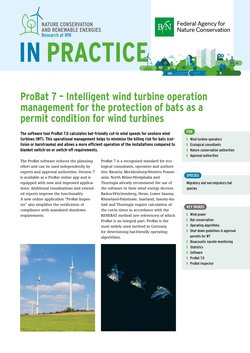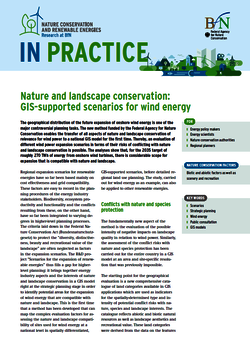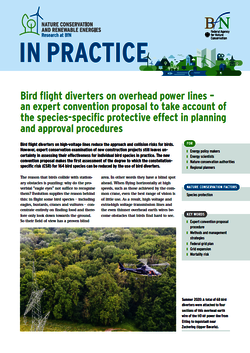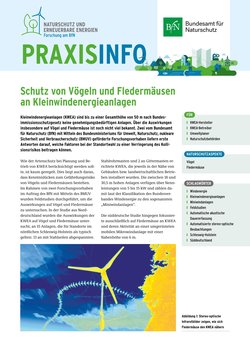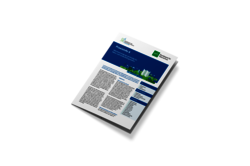In practice 1
ProBat 7 – Intelligent wind turbine operation management for the protection of bats as a permit condition for wind turbines
The software tool ProBat 7.0 calculates bat-friendly cut-in wind speeds for onshore wind turbines (WT). This operational management helps to minimise the killing risk for bats (collisionr barotrauma) and allows a more efficient operation of the installations compared to blanket switch-on or switch-off requirements.
